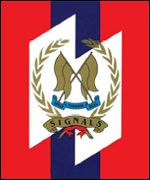
The Singapore Armed Forces (SAF) are the military services of the Republic of Singapore, responsible for its defence and national interests. A military component of the Ministry of Defence (MINDEF), it is one of the most capable, robust, technologically sophisticated and powerful militaries in Southeast Asia and the surrounding regions.

The Singapore Army is the land service branch of the Singapore Armed Forces (SAF). It is the largest of the three services and primarily a conscript army that in the event of national exigencies or war, morphs itself from peacetime to a war footing by mobilising almost all of its combined combat power by calling up operationally-ready military reservists.
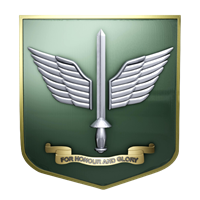
The SAF Commando Formation is the special operations formation of the Singapore Armed Forces (SAF) responsible for conducting special operations. It is only made up of one battalion, the 1st Commando Battalion.

The Malaysian Army is the land component of the Malaysian Armed Forces. Steeped in British Army traditions, the Malaysian Army does not carry the title ‘royal’ as do the Royal Malaysian Navy and the Royal Malaysian Air Force. Instead, the title is bestowed on selected army corps and regiments who have been accorded the honour by the Yang di-Pertuan Agong, who is the Supreme Commander of the Malaysian Armed Forces.

The Royal Australian Corps of Signals (RASigs) is one of the 'arms' of the Australian Army. It is responsible for installing, maintaining, and operating all types of telecommunications equipment and information systems. The motto of the Signals Corps is Certa Cito and is translated as 'Swift and Sure', signifying the aim of the signal service – that communication be carried out with maximum speed and certainty. Like their British counterparts, the Royal Australian Corps of Signals' flag and hat badge feature Mercury, the winged messenger of the gods, affectionately referred to by members of the corps as "Jimmy".

Infantry is the main and largest formation of the Singapore Army, comprising seven active battalions – the 1st, 2nd, 3rd, 5th, 6th, 8th and 9th Battalions, Singapore Infantry Regiment (SIR) – based in Clementi Camp, Kranji Camp III, Maju Camp, Mandai Hill Camp and Selarang Camp, and an undisclosed number of reservist battalions. The Infantry formation shares the same command as that of the Singapore Army's 9th Division.
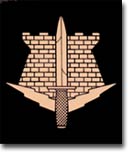
The Singapore Combat Engineers (SCE) is a formation of the Singapore Army. Combat Engineers provide mobility by bridging gaps and clearing minefields to facilitate speedy advance of troops into enemy territory, and counter-mobility by constructing obstacles such as anti-tank ditches to impede the enemy's movement. The Combat Engineers also construct trenches, drainage systems and other related infrastructure to enhance the survivability of troops during operations.
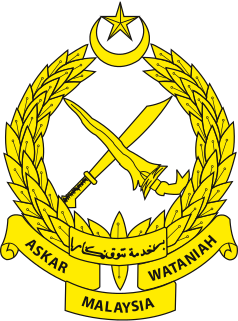
The Rejimen Askar Wataniah is the military reserve force of the Malaysian Army.
Singapore has had an history of armed conflict and personnel dating to the colonial period.

The 2nd Signal Brigade, was a military formation of the British Army composed of Royal Corps of Signals units. The brigade was first formed following the reorganisation of the old Territorial Army in 1967, and was disbanded in 2012 under the Army 2020 programme. However, later the 2nd Signal Group was formed continuing the lineage of the old brigade, before it was disbanded in 2018.
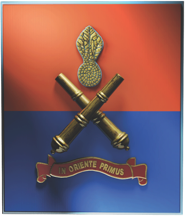
The Singapore Artillery is a formation of the Singapore Army. It consists of two battalions made up of regular servicemen, one active conscript and one reservist battalions. The primary role of the Artillery is to deliver timely, accurate and effective fire in support of the manoeuvre force to accomplish its missions. As the Artillery is an indirect fire support system, the gunners at the weapons do not need to see the targets to engage fire.

Armour is the formation of the Singapore Army responsible for armoured warfare. It provides mobile firepower support and rapid mobility for the Army by helping to spearhead an advance past the enemy defences and seizing and holding key objectives on the battlefield. Armour also acts as an active deterrent towards any possible aggressors as it is known to act swiftly, being able to be deployed at a moment's notice to dominate the battlefield, hence its motto "Swift and Decisive". It has four active battalions – the 40th, 41st, 42nd and 48th Battalions, Singapore Armoured Regiment (SAR) – based in Keat Hong Camp and Sungei Gedong Camp, as well as an undisclosed number of reservist battalions.
36 Signal Regiment is Reserve unit of the Canadian Army, assigned to 36 Canadian Brigade Group. It was created on 1 April 2012 after several years of planning.

The 1st Signal Brigade, formerly known as the 1st Signal Group, is a brigade of the British Army. The group was first formed in 1968 as a result of the 1966 Defence White Paper which expanded support for NATO and the British Army of the Rhine. In 1987 the group was disbanded and merged into the 2nd Signal Brigade. In 1995 the brigade was reformed and has since deployed on operations across the globe in support of NATO and HQ Allied Rapid Reaction Corps.
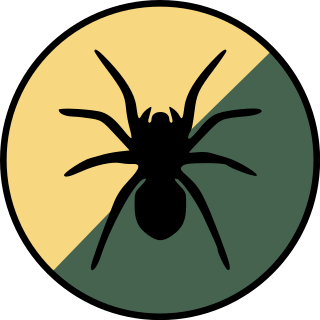
1st Intelligence, Surveillance and Reconnaissance Brigade of the British Army was created as part of the Army 2020 reform, to command military intelligence, ISTAR, and electronic warfare units.
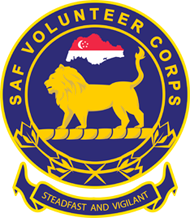
The Singapore Armed Forces Volunteer Corps (SAFVC) is a uniformed volunteer auxiliary branch of the Singapore Armed Forces. It was established on 13 October 2014 to allow Singaporean women, first generation permanent residents and naturalised citizens, all of whom would otherwise not be subject to an obligation to serve national service, to contribute their part towards Singapore's defence. It also aims to strengthen support for national service by understanding the duties of national servicemen.
The SAF Day Parade is an annual military parade and ceremony of the Singapore Armed Forces held on 1 July in commemoration of the founding of the SAF. It is the second military parade in seniority to be held in Singapore next to the Singapore National Day Parade in August. It is usually held at the SAFTI Military Institute in Jurong West while in the presence of the President of Singapore in their position as commander-in-chief. Salutes are also taken by the Prime Minister of Singapore, and the Chief of Defence Force.
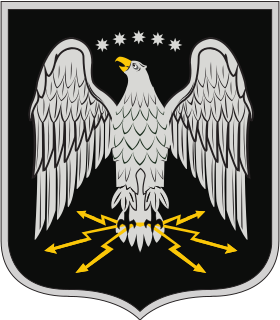
The Headquarters Support and Signal Battalion is a battalion sized signal unit of the Estonian Land Forces. It is a part of the Cyber Command and its primary task is to ensure communication between the different units of the Estonian Defence Forces, Estonian Defence League and to train reserve signal officers. The battalion must also ensure the strategic signalling and information technology support for the Defence Forces and realise development projects in the area of defence, information technology and electronic warfare.
The 4th (Volunteer) Battalion, The Worcestershire and Sherwood Foresters was a former territorial infantry battalion that existed for a short time towards the end of the Cold War. Following reductions to the Territorial Army (TA) in 1992, the battalion was disbanded with elements helping to form RHQ & HQ Sqn of 37 Signal Regiment, and 96 Signal Squadron. This squadron was then reduced to a signal troop in 2009, but continues to exist as part of 48 Signal Squadron.
